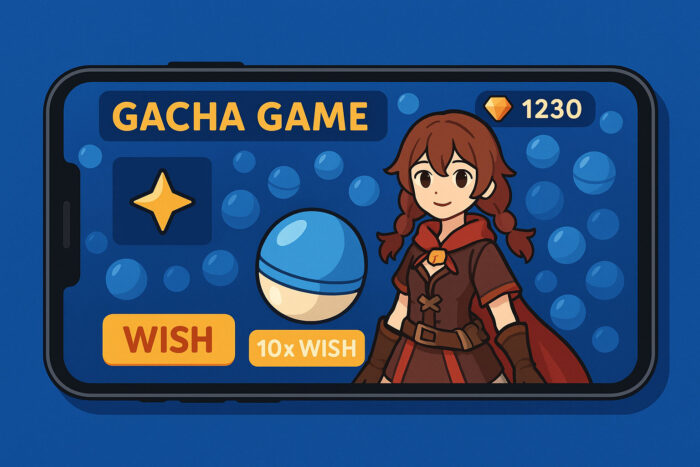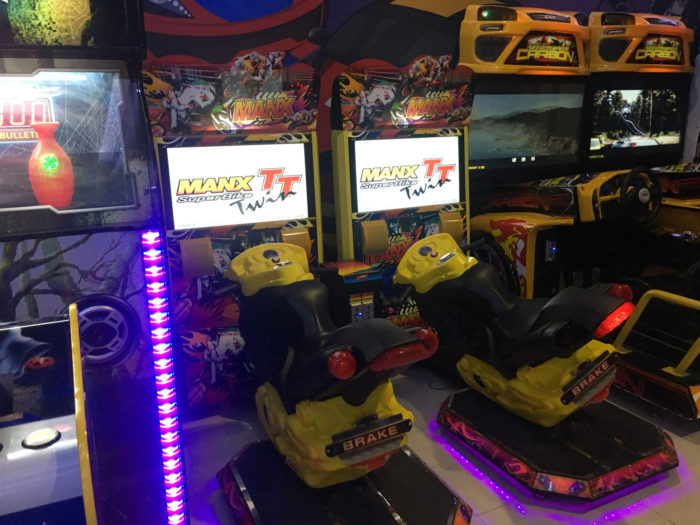At the same time, making the game fun to play.
Many free-to-play games uses this system in order to collect real money from players. Often faced by controversy and criticism, the gacha game system is considered as “simulated gambling” because you are betting for something that you can afford to lose. They can be addictive and, at the same time, thrilling. Some “whales” often dominate in gacha games, since they can able to spend more money, being more competitive, and to get as many ultra rare characters as possible. Despite this, gacha games are incredibly popular due to their engaging gameplay, rich stories, and the thrill of pulling for rare items.
What is a Gacha Game?
A gacha game is a type of video game that incorporates a mechanic inspired by gashapon (capsule toy vending machines). Players would use in-game currency (i.e. Gems, Diamonds, Jewels, or equivalent), which can often be earned through gameplay (i.e. Daily Quests or Missions) or purchased with real money, in order to obtain random virtual items like characters, weapons, or other resources. This “gacha” mechanic is similar to opening a loot box or pulling from a “lottery”.

Game is Megamiracle Force (Currently EOS)
Some key features of a typical gacha game would be the following:
Randomized Rewards:
- The primary appeal of every single gacha game lies in the excitement of obtaining rare or desirable items (i.e. Five-star or Ultra Rare).
- Items that are often ranked by rarity, such as “common,” “rare,” and “ultra-rare.”
In-Game Currency:
- Players would spend in-game currency to “pull” from a gacha (or on what they call as “banner”).
- These such in-game currencies can be earned through gameplay (i.e. Daily Quests or Missions), or can purchased using real money.
Collection Mechanics:
- Players are encouraged to collect more and unique characters, weapons, or items in order to strengthen their teams, stats, or their progresses in the game.
Events and Limited-Time Offers:
- Some gacha games frequently host special events or offer limited-time characters to incentivize spending.
- Example would be a certain character banner, in which it can only appear once in an event. A “re-run” can be possible, but is included in a pool of characters that were previously released with a slightly higher appearance rate.
Free-to-Play (F2P) Model:
- Most gacha games are free to play, but they include microtransactions to monetize players who want to pull more frequently or acquire rare items faster.
Strategic or Role-Playing Elements:
- Many gacha games include RPG mechanics, wherein players mus use their collected items or characters in battles, story modes, or competitive gameplay.
- There are cases that a game can be considered “Pay-to-Win”, wherein some players must pull that certain character or item/weaponry, in order to advance well in the story or event.
Popular Examples of Gacha Games:
- Hoyoverse Games (Genshin Impact, Honkai: Star Rail, etc.)
- Fate/Grand Order
- AFK Arena
- Fire Emblem Heroes
- Summoners War
- Arknights
How did one system has changed some Gacha Games?
Some games do really require you to do a certain number of pulls or draws, in order to guarantee a higher rarity character or item. This system has started somehow with Hoyoverse’s Genshin Impact, where it has implemented a “pity” system for players.
In Genshin Impact, the pity system is a mechanic designed to ensure that players can receive a high-rarity item (usually a 4-star or 5-star character/weapon) after a certain number of attempts or draws in the game’s Wish (gacha) system. It helps to mitigate the frustration of bad luck by guaranteeing a reward within a set number of pulls.
How the Pity System Works in Genshin Impact?
There are three types of Wishes. The Character Event Wish features a limited-time 5-star character as the primary reward. Drawing on that banner in 90 Wishes would guarantee a player a 5-star character. The Weapon Event Wish is mostly on weapons wielded by the featured character in the Character Event Wish banner. Drawing on it in 80 wishes would guarantee a player a 5-star item or weapon. Meanwhile, the Standard Wish (Wanderlust Invocation) is a permanent banner, where you could draw a random high rarity character by chance, but it’s possible to draw a high rarity character with a certain number of Wishes.
For the rarity and pity thresholds, you are guaranteed a 4-star character or item for every 10 Wishes you make. Meanwhile, it takes 90 Wishes in order to get a 5-star rarity (character or item).
An “early pity” may occur, if a player has drawn at least 20 Wishes or less. “Hard pity” is basically at most 70 Wishes, which basically increases the chance of getting a 5-star character or item from the event character banner.
TIP: Sometimes, what can you receive may not be the featured event character, but of a different one. When that occurs, the next 5-star pull is guaranteed to be the featured one. Pulling a 5-star character successfully would reset the pity count. Also, the pity counter will be carried over to the next event banner.
Pity count is tracked separately for 4-star and 5-star items and also separately across banners (e.g., Standard Wish pity does not affect Character Event Wish).
Example Scenario:
- If you pull 89 times on a Character Event Wish and don’t get a 5-star, the 90th pull will guarantee you one.
- If your 90th pull is a standard 5-star character (not the featured one), the next 5-star character is guaranteed to be the featured one.
Thoughts About the Pity System
The pity system in some gacha games ensure fairness and predictability, making it possible for players to plan their pulls and manage resources effectively while still enjoying the thrill of the gacha system. And this can help the players to moderately spend cash.



